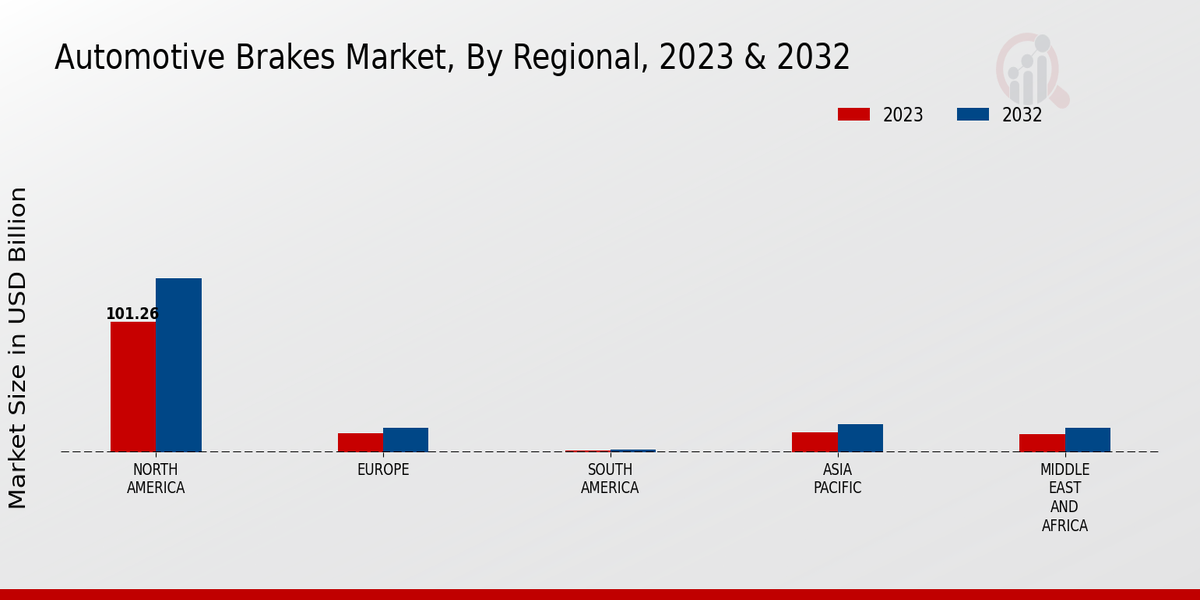Market Growth Projections
The Global Automotive Brakes Market Industry is projected to experience a compound annual growth rate (CAGR) of 3.42% from 2025 to 2035. This growth trajectory suggests a steady increase in demand for automotive braking systems, driven by factors such as technological advancements, regulatory changes, and evolving consumer preferences. The market is expected to reach a valuation of 220.7 USD Billion by 2035, reflecting the industry's resilience and adaptability to changing market dynamics. Such projections highlight the importance of strategic planning and investment in innovation for stakeholders within the automotive brakes sector.
Increasing Vehicle Production
The Global Automotive Brakes Market Industry is experiencing growth driven by the rising production of vehicles worldwide. In 2024, the market is valued at 152.4 USD Billion, reflecting the increasing demand for automotive components, including braking systems. As manufacturers ramp up production to meet consumer demand, the need for reliable and efficient braking systems becomes paramount. This trend is particularly evident in emerging markets, where vehicle ownership is on the rise. The expansion of automotive manufacturing facilities globally further supports this growth, indicating a robust future for the automotive brakes sector.
Growing Electric Vehicle Adoption
The shift towards electric vehicles (EVs) is reshaping the Global Automotive Brakes Market Industry. As the automotive landscape evolves, the demand for specialized braking systems tailored for EVs is increasing. Electric vehicles often require different braking technologies, such as regenerative braking systems, which enhance energy efficiency. This transition is expected to contribute to the market's growth, with projections indicating a market value of 220.7 USD Billion by 2035. The rise of EVs not only diversifies the braking system offerings but also encourages manufacturers to innovate, thereby fostering a competitive environment in the automotive brakes market.
Regulatory Standards and Safety Norms
The Global Automotive Brakes Market Industry is significantly impacted by stringent regulatory standards and safety norms imposed by governments worldwide. These regulations mandate the implementation of advanced braking technologies to enhance vehicle safety. Compliance with these standards often requires manufacturers to invest in high-quality braking systems, which in turn drives market growth. For example, the European Union has established rigorous safety regulations that necessitate the use of advanced braking technologies in new vehicles. As these regulations evolve, they are likely to create further opportunities for innovation and expansion within the automotive brakes sector.
Rising Consumer Awareness of Vehicle Safety
Consumer awareness regarding vehicle safety is a pivotal driver for the Global Automotive Brakes Market Industry. As individuals become more informed about the importance of effective braking systems, they are increasingly prioritizing safety features when purchasing vehicles. This heightened awareness prompts manufacturers to enhance their braking technologies, ensuring compliance with safety standards and consumer expectations. Consequently, the demand for high-performance braking systems is on the rise, contributing to the overall growth of the market. This trend indicates a shift in consumer behavior that manufacturers must address to remain competitive in the automotive brakes sector.
Technological Advancements in Brake Systems
Technological innovations are significantly influencing the Global Automotive Brakes Market Industry. The integration of advanced materials and electronic systems enhances braking performance and safety. For instance, the development of anti-lock braking systems (ABS) and electronic stability control (ESC) has transformed traditional braking mechanisms. These advancements not only improve vehicle safety but also contribute to the overall efficiency of braking systems. As consumers increasingly prioritize safety features in vehicles, manufacturers are compelled to adopt these technologies, thereby driving market growth. This trend suggests a promising trajectory for the automotive brakes market in the coming years.






